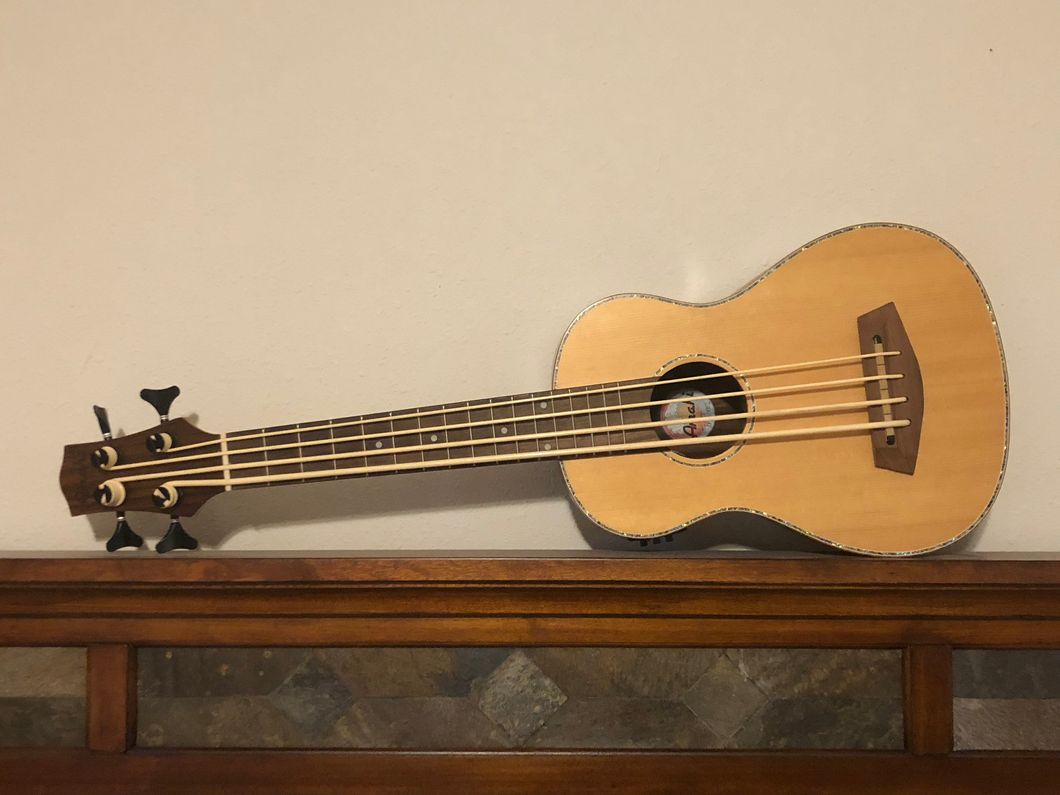Ukulele basses, or uku-basses for short are very interesting members of the bass family. With their acoustic bodies and silicone strings, the produce a sound that is very unique. I recommend every avid bass player or collector get one, but there are a few things you need to know before you buy one.
1. Ukulele skills do not translate to the uku-bass.
A uku-bass does not follow the same tuning pattern as ukuleles. Standard tuning for the open strings on a ukulele is G C E A. The standard tuning of uku-bass is the same as the standard tuning bass guitars: E A D G. Uku-basses are also different from baritone ukuleles that have the same standard tuning as the highest four strings on a guitar: D G B E.
2. You will need an amp and cables.
If you play a bass guitar already, most likely you already have an amp and cables. The are very much needed for uku-basses because, despite their acoustic bodies, the silicone strings don't produce a strong sound. Most uku-bases have simple pickups in them as well as a quarter inch plug-in so being able to connect to an amp is easy.
3. You will need a humidifier.
If you play any acoustic instruments, you probably understand the importance of a humidifier, but since most bass guitars are not acoustic, this can be lost on some bassists. Humidifiers are very important for acoustic guitars because the help keep the wood from drying out and cracking. Uku-basses are no different, since most of them are acoustic, and standard guitar humidifiers will do the trick just fine.
Uku-basses are fun basses to play. They take a bit of getting used to, with their short neck length and fat silicone strings, but they can produce a truly unique sound that makes them worth it. I would not suggest making a uku-bass your first bass guitar if you are just beginning to play, but I do suggest getting one once you gain some bass playing experience.



 Photo by
Photo by  Photo by
Photo by  Photo by
Photo by 


















